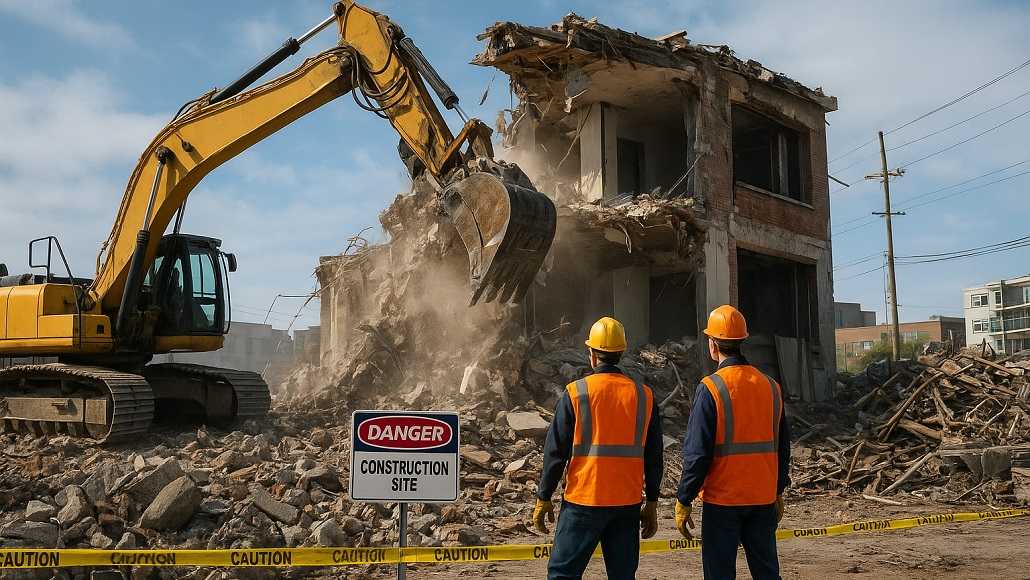Demolitions are a common occurrence in the US. According to Building Resources of San Francisco, there are roughly 250,000 to 300,00 house demolitions per year in the United States. This is a staggering statistic, but this doesn’t mean that all companies understand the process. Some companies, like your own, might benefit from learning about what this process entails.
T here are numerous stages to a demolition project. It involves a significant amount of planning and preparation, along with the need to meet various legal requirements. This should all begin well before the structure is taken down, and three of the key aspects to understand before demolishing a building have been outlined below.
Hazard Identification and Safety Planning
The very first step of a demolition project is identifying potential hazards. In fact, this should be completed before the project even begins. Some buildings, particularly the older ones, could contain asbestos, mold, lead paint, and other dangerous materials. These materials can pose serious health risks if they are disturbed. It is best to have a licensed inspector inspect for these materials and recommend safe removal methods.
Another key aspect to prepare for is safety planning. Injuries can be caused by falling debris, sharp objects, or unstable walls if the project is not managed correctly. This is why workers must wear the proper protective gear when on site, and there should be clear warning signs displayed around the site. There should also be a safety plan, which will outline emergency procedures, equipment needs, and the step-by-step demolition plan.
If you are working in partnership with a demolition company, they must have a good track record and safety certifications. These are vital and will ensure you are working with a reputable business.
Site Preparation and Utility Disconnection
After creating a safety plan, the site can then be prepared. This will include clearing out appliances, furniture, and any personal items from the building or facility. In case of the latter, there might be professional equipment that needs to be removed. It is best to address outdoor hazards, such as fences or trees near the property that is to be demolished, too.
Disconnecting utilities is a crucial aspect of site preparation. You must consider shutting off electricity, gas, sewage, and water lines; these must all be safely disconnected before the demolition begins. This can prevent gas leaks and water damage from occurring. To complete this process, you should contact your utility providers and get confirmation in writing before proceeding.
Permits, Professionals, and Disposal
As demolition is a legal process, too, it does require a permit. Permits will ensure the work complies with local building codes and safety regulations. You could face delays, fines, or even lawsuits if you fail to obtain a permit for the demolition project. This is one reason why you might hire experienced demolition contractors, who understand the rules in this field.
Although disposal will be the final step in this process, you must think about it ahead of time. Concrete, metal, wood, and other broken materials need to be sorted and taken to the right facilities. This might require partnerships with recycling companies. For example, Goldstar Metal Recycling can sort, pile, and haul away any waste materials that are left after the demolition has been completed.
To conclude, demolishing a structure is not a simple task. Careful planning is necessary, particularly if there are nearby structures to consider. Thankfully, you can use the information explained in this post to guarantee your demolition project goes smoothly.































